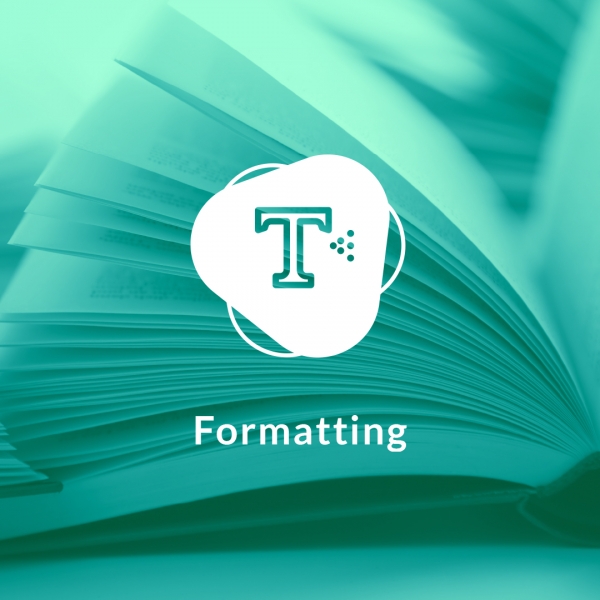Navigating the Steps to Traditional Publishing: A Comprehensive Guide
Embarking on the journey to see one’s work in print is a dream cherished by many writers. Traditional publishing, a time-honored pathway, stands out as a testament to this pursuit, offering a structured avenue through which authors can bring their literary visions to fruition. This revered traditional publishing route often involves partnering with established publishing houses that undertake the responsibility of editing, designing, printing, distributing, and marketing an author’s work. Such collaboration not only validates the quality of the manuscript through a rigorous selection process but also aligns it with the professional standards revered across the literary landscape.
In contrast, self-publishing presents an alternative where the author assumes the roles of writer, editor book, cover designer, publisher, and marketer, affording a greater degree of control over the publishing process. This path, empowered by digital platforms and print-on-demand technology, has democratized access to publishing, allowing a wider array of voices to be heard. However, the allure of traditional publishing remains undiminished for many, rooted in its prestigious history and the comprehensive support system it provides. to traditionally published authors
Securing a traditional publishing deal is often perceived as a hallmark of literary accomplishment, serving not only as a seal of approval from industry professionals but also as a gateway to a broader readership. Publishers bring to the table their expertise in both publishing books and navigating market trends, their established distribution networks, and their marketing prowess, aspects that are invaluable for authors aspiring to make a significant impact with their work. Furthermore, for most writers traditional publishing offers the potential for critical acclaim, literary awards, and inclusion in esteemed literary circles, in certain genres milestones that are often more challenging to achieve through self-publishing routes.
This guide aims to illuminate the steps to traditional publishing and towards achieving a traditional publishing deal, from the meticulous preparation of your manuscript to the moment your book graces shelves and digital platforms. As we delve into this comprehensive journey, we will explore the intrinsic value of traditional publishing in an author’s career, the intricacies of crafting compelling proposals, for book sales the pivotal role of literary agents, and the exhilarating process of transitioning from aspiring writer to published author. Through this exploration, we aim to equip you with the knowledge and strategies to navigate the complex yet rewarding path of traditional publishing.
Your Publishing Journey Awaits – Start NowDefining Traditional Publishing
Traditional publishing embodies the classic route through which authors share their works with the world, characterized by a partnership between an author and a publishing house. This collaboration is based on the traditional publisher’s role in editing, designing, producing, and marketing the book, assuming the financial risks and responsibilities without upfront charges to the author. This model starkly contrasts with self-publishing, where authors independently manage the publication process, and vanity publishing, where authors pay for publication without the rigorous selection typical of traditional routes.
Traditional vs. Self and Vanity Publishing
The key distinctions between traditional publishing, self-publishing, and vanity publishing lie in control, investment, and selection. Self-publishing offers authors complete control and rapid market access but requires them to handle every aspect of the publication, from editing to sales. Vanity publishing, while seemingly similar to traditional publishing, lacks its market-driven selection process and demands payment from authors for publication services. Traditional publishing, therefore, stands out for its selective, investment-driven approach, ensuring that only works believed to have potential are published, with all associated costs borne by the traditional publisher.
The Role of Publishing Houses
Central to traditional publishing are the publishing houses, which range from large, internationally recognized brands to smaller, niche-focused independent presses. These institutions are responsible for not only bearing the financial burden of publishing books but also ensuring that the books they choose to publish meet the highest quality standards and are well-suited for their intended audiences. The journey from manuscript to bookshelf involves a rigorous process of editing, designing, marketing, and distributing books originally published there, aimed at maximizing the book’s reach and impact.
Inside the Traditional Publishing House
Acquisitions Editors and Literary Agents
At the heart of a publishing house’s operations are its acquisitions editors and literary agents. Acquisitions editors are often the first to review submissions, by acquiring editors identifying manuscripts that align with the publisher’s goals and market demands. These professionals act as advocates for chosen manuscripts, guiding them through the internal approval process.
The Publishing Team
Once a manuscript is accepted, a dedicated team of publishing professionals, including editors, designers, marketing specialists, and distribution experts, collaborates to refine, produce, and promote the book. This comprehensive support structure is a hallmark of traditional publishing houses ensuring that each book is positioned for success in the competitive literary market.
The Operational Dynamics of Traditional Publishers
Traditional publishers are defined by their commitment to editorial integrity, market relevance, and audience engagement. This involves a detailed editorial process to polish the manuscript, strategic cover design and formatting to enhance appeal, and targeted marketing campaigns to build visibility and interest. Additionally, established distribution networks ensure the widespread availability of the published work, maximizing its potential reach and impact.
In essence, traditional publishing represents a synergetic approach to literature, leveraging the collective expertise of publishing companies and professionals to bring authors’ visions to fruition. It offers a structured pathway to publication, marked by professional validation and a shared commitment to literary excellence.
The Foundation of Your Publishing Journey: A Polished Manuscript
At the heart of every successful publishing endeavor lies a meticulously polished manuscript. This initial, critical phase sets the tone for the entire publishing process, embodying the author’s dedication to craftsmanship and quality. A manuscript that shines with clarity, coherence, and compelling content not only captures the attention of literary agents and publishers but also lays the groundwork for a book that resonates with readers.
The Crucial Role of Beta Readers and Editing
Engaging Beta Readers
Beta readers play an invaluable role in the manuscript refinement process, offering fresh perspectives and insightful feedback. These early readers, often a mix of peers, writing group members, or even target audience representatives, provide constructive criticism that highlights strengths and weaknesses in plot, character development, pacing, and overall reader engagement. The objective, thoughtful input from beta readers can be instrumental in identifying areas that require further development or clarification.
Embracing the Editing Process
Following the beta reading phase, the full manuscript then undergoes rigorous editing, a multi-layered process that includes developmental editing, copyediting, and proofreading. Developmental editing addresses structural and thematic elements, ensuring the manuscript’s overall coherence and impact. Copyediting focuses on grammar, punctuation, and stylistic consistency while proofreading catches lingering typos and formatting issues. Each stage of editing is crucial, progressively enhancing the readability and polish of the finished manuscript.
Revisions: The Path to Perfection
Revisions are an integral part of preparing your manuscript. This stage involves reworking sections based on feedback, refining language, and ensuring the narrative flows seamlessly. It’s essential to approach revisions with an open mind and a willingness to make tough decisions for the betterment of your work. This iterative process might seem daunting, but it’s where the magic happens, transforming a good manuscript into a great one.
Writing for Your Genre and Audience
Understanding Genre Expectations
Each literary genre comes with its own set of conventions and reader expectations, from the suspenseful twists of thrillers to the emotional depth of literary fiction. Familiarizing yourself with these nuances is crucial in crafting a manuscript that meets, or even exceeds most traditional publishers’ standards. This involves extensive reading within your genre, studying successful authors, and understanding what resonates with your target audience.
Crafting for the Market
While staying true to your unique voice and vision, it’s also important to keep market trends and publisher expectations in mind. This doesn’t mean chasing trends but rather being aware of what’s currently resonating in the literary world and finding where your work fits within that landscape. Publishers are looking for manuscripts that not only exhibit exceptional writing and storytelling but also have the potential to appeal to a broad audience.
Practical Tips for Manuscript Preparation
1. Set it Aside: After completing your manuscript, take a break from it. Returning with fresh eyes will help you see aspects you might have missed initially.
2. Seek Constructive Feedback: Embrace feedback from beta readers and critique partners, but also learn to filter advice and maintain your manuscript’s core integrity.
3. Invest in Professional Editing: If possible, consider hiring a professional editor to bring a new level of polish to your work, especially if you’re targeting highly competitive genres.
4. Study the Masters: Read widely in your genre, analyzing how writers and successful authors construct their narratives, develop characters, and engage readers.
5. Embrace Revision: Be prepared for multiple rounds of revisions. It’s a necessary step toward refining your story and enhancing its impact.
Preparing your manuscript for traditional publishing is a journey of dedication, reflection, and continuous improvement. By honing your craft, embracing feedback, and understanding your genre, you can craft a manuscript that stands out in the competitive publishing landscape. Remember, the strength of your manuscript is not just in its original draft but in its evolution through thoughtful revisions and meticulous editing.
Your Publishing Journey Awaits – Start NowMastering the Art of the Query Letter
A query letter is your first point of contact with a literary agent or acquisitions editor, serving as a professional introduction to you and your manuscript. This one-page letter must encapsulate the essence of your work, its market potential, and your authorial identity, all while adhering to a concise and engaging format.
The Anatomy of a Query Letter
1. Opening Salutation: Address the agent or editor by name, ensuring correct spelling and titles. Personalization is key to establishing a respectful and professional tone from the outset.
2. Hook: Begin with a compelling hook that captures the unique premise or central conflict of your story. This should be intriguing and succinct, aiming to grab the recipient’s attention immediately.
3. Synopsis: Provide a brief overview of your manuscript, highlighting major plot points, character arcs, and the narrative’s emotional journey. Keep this section tight, focusing on what makes your story stand out.
4. Market Positioning: Demonstrate an understanding of your book’s place within the market. Mention comparable titles and how your work differs from and complements existing works in your genre.
5. Author Bio: Share relevant information about yourself, including writing credentials, publications, awards, and any expertise or experiences that inform your writing. This section should underscore why you’re the right person to tell this story.
6. Closing: Politely thank the agent or editor for their consideration and mention any manuscript attachments or enclosures, as per their submission guidelines.
Tips for a Winning Query Letter
- Personalize: Research each agent or editor to personalize your letter, reflecting familiarity with their work and preferences.
- Clarity and Precision: Use clear, concise language to convey your message effectively. Every word counts in a query letter.
- Professionalism: Maintain a professional tone throughout, ensuring your letter is free from typos and grammatical errors.
- Follow Submission Guidelines: Adhere strictly to the submission guidelines of each agent or publisher, tailoring your query letter to meet their specific requirements.
Crafting an Effective Book Proposal
While fiction authors typically rely on query letters and manuscript samples, nonfiction authors must present a comprehensive book proposal. This document provides a detailed overview of your book’s concept, audience, structure, and market viability.
Essential Components of a Book Proposal
- Overview: Begin with a compelling overview that captures the essence and unique selling points of your book. This section should convey the book’s theme, purpose, and why it’s necessary.
- Target Audience: Clearly define your target audience, providing demographic details and explaining why your book is relevant and appealing to this group.
- Market Analysis: Analyze the current market, citing comparable titles and explaining how your book fills a gap or presents a new perspective. This demonstrates market awareness and potential sales appeal.
- Author Biography: Highlight your qualifications, experiences, and any platform (social media, speaking engagements, etc.) that positions you as an authority on your book’s topic.
- Chapter Summaries: Provide a detailed outline of your book, with summaries for each chapter. This showcases the book’s structure and the progression of your argument or narrative.
- Sample Chapters: Include one or two polished sample chapters to demonstrate your writing style, expertise, and how you plan to deliver on the book’s promise.
Tailoring Your Proposal
Each publishing house and literary agent has unique submission guidelines and preferences for book proposals. Tailoring your book proposal to meet these specific requirements is crucial for several reasons:
Alignment with Publisher’s Catalog: Demonstrating how your book fits within a publisher’s existing catalog can increase its appeal, suggesting a natural fit for their target audience.
Adherence to Guidelines: Following submission guidelines meticulously shows professionalism and respect for the agent’s or publisher’s processes.
Customization for Audience: Tailoring the proposal allows you to emphasize aspects of your book that are most likely to resonate with the specific interests and priorities of the agent or publisher you’re approaching.
Final Considerations
Crafting the perfect query letter or book proposal is a meticulous process that requires research, personalization, and a clear understanding of your manuscript’s strengths and market potential. For fiction, a well-crafted query letter that captures the essence and excitement of your story is paramount. For nonfiction, a detailed and compelling book proposal is essential to demonstrate not only the value and uniqueness of your book but also your capability as an author to deliver a valuable, marketable work.
Remember, these documents are often your first and only chance to make a good impression on a potential agent or publisher. Invest the time to make them as polished and compelling as your manuscript, ensuring they accurately reflect your professionalism and dedication to your craft.
Navigating the Literary Landscape: The Role of Literary Agents
In the journey toward traditional publishing, literary agents are invaluable allies, serving as the bridge between authors and publishing houses. Their expertise in the literary market and established relationships with editors and publishers position them to advocate effectively for your work. Agents are adept at negotiating contracts, ensuring authors receive fair terms and beneficial deals. They also provide guidance on manuscript refinement, leveraging their industry knowledge to enhance your work’s appeal to potential publishers.
Researching and Selecting the Right Agent
Understanding Agent Specializations
Literary agents typically specialize in specific genres or categories, reflecting their personal interests, expertise, and professional networks. It’s crucial to identify agents who not only represent your genre but also have a track record of successful placements with reputable publishers.
Resources for Agent Research
- Writer’s Market: This comprehensive directory offers listings of literary agents, including their preferences, submission guidelines, and contact information.
- Agent Query: An online resource that provides a searchable database of agents, allowing you to filter by genre, experience, and other criteria.
- Conferences and Workshops: Literary events often feature agent panels and pitch sessions, offering insights into their interests and working styles.
- Acknowledgments in Books: Authors often thank their agents in book acknowledgments, giving you clues about who might be interested in similar works.
Evaluating Agent Fit
When researching agents, consider the following:
- Genre Alignment: Ensure the agent has a passion for and experience with your specific genre.
- Client List: Review the agent’s current and past clients to gauge their success and market influence.
- Agency Reputation: Consider the reputation and size of the agency, which can impact resources and connections.
- Communication Style: Look for hints about the agent’s preferred communication style and ensure it aligns with your expectations.
Approaching Literary Agents
Crafting Your Submission
Once you’ve identified potential agents, tailor your query letter and manuscript samples to align with their submission guidelines. Personalize each query to reflect your understanding of the agent’s work and express why you believe your project is a good fit for their portfolio.
Submission Guidelines
Adhere meticulously to each agent’s submission guidelines, which can vary widely. These often specify the format, length, and content of your submission, including how many pages or chapters to include.
Following Up
After submitting, be prepared for a waiting period that can span several weeks or months. If an agent expresses interest, they may request a full manuscript or additional materials. Maintain professionalism in all communications, and be prompt and courteous in your responses.
Working with a Literary Agent
Once an agent agrees to represent you, discuss expectations regarding communication, submission strategies, and your role in the publishing process. This initial conversation can set the tone for a productive working relationship.
The Revision Process
Your agent may suggest revisions to enhance your manuscript’s marketability. Approach this feedback with an open mind, recognizing that your agent’s insights are grounded in industry knowledge and a desire to see your work succeed.
Navigating the Submission Process
Your agent will handle submissions to publishers, leveraging their contacts and expertise to place your manuscript with the right publisher. Trust in your agent’s strategy, but feel free to discuss potential publishers and any preferences you may have.
Contract Negotiation
Upon receiving a publishing offer, your agent will negotiate on your behalf, aiming to secure a book deal on the best possible terms. They’ll discuss advances, royalties, rights, and other contractual details, ensuring your interests are protected.
Tips for a Successful Agent-Author Partnership
1. Communication is Key: Maintain open and honest communication with your agent. Regular updates and feedback can enhance your collaborative efforts.
2. Be Open to Feedback: Your agent’s feedback is aimed at strengthening your manuscript. Be receptive to their suggestions while maintaining your creative vision.
3. Patience Pays Off: The publishing process can be lengthy. Trust in your agent’s approach and be patient as they work to find the best home for your manuscript.
4. Stay Engaged: While your agent will lead the way, stay engaged with the process. Your enthusiasm for your work and your career can be contagious.
Finding and working with the right literary agent can significantly impact your journey toward traditional publishing. By carefully researching agents, crafting personalized submissions, and fostering a positive, collaborative relationship, you can navigate the publishing landscape more effectively, bringing your literary dreams one step closer to reality.
Embarking on the Submission Journey
The submission process to publishing houses marks a critical phase in an author’s journey toward traditional publication. This stage commences once a literary agent, convinced of your manuscript’s potential, takes on the mantle of representing your work. The agent’s role transcends mere representation; they become strategists, leveraging their industry acumen and relationships with traditional book publishers to place your manuscript in the hands of the most suitable publishers.
Your Publishing Journey Awaits – Start NowThe Mechanics of the Submission Process
Your literary agent curates a list of target publishers, prioritizing those whose publishing lines align with your manuscript’s genre, theme, and style. Each submission is tailored, ensuring that it adheres to the specific preferences and guidelines of the respective publishing house. This bespoke approach enhances the manuscript’s chances of resonating with acquisitions editors, most publishers the gatekeepers to publication.
Post-submission, authors find themselves in a quiescent phase colloquially known as “the waiting game.” This period can vary significantly, ranging from weeks to months, contingent on the publishers’ review timelines and backlog. Patience becomes an indispensable virtue during this interval, as the publishing world’s gears turn at their own pace.
Dealing with Rejections and Feedback
Rejection is an almost inevitable waypoint in the traditional publishing journey. It’s essential to understand that rejection letters, often generic and succinct, are not a repudiation of your work’s value but rather a reflection of its fit with the publisher’s current needs, market conditions, or editorial preferences.
Occasionally, rejection letters come with the silver lining of feedback. Though rare, such constructive criticism is invaluable, offering insights into how industry professionals perceive your work. Whether it concerns character development, pacing, or thematic depth, this feedback can guide substantive improvements in your manuscript.
Strategies for Navigating Rejections and Feedback
The path to publication is often paved with rejections. Developing a thick skin and resilience in the face of these setbacks is crucial. View each rejection not as a roadblock but as a step closer to finding the right home for your manuscript. When feedback accompanies a rejection, embrace it as a gift. Analyze the critique, distill actionable insights, and consider how they might enhance your manuscript. This iterative refinement process is fundamental to the craft of writing.
Open Dialogue with Your Agent
Maintain an open line of communication with your literary agent throughout the submission process. Agents can offer perspectives on the feedback and rejections, contextualizing them within the broader publishing industry and landscape. Their experience can provide reassurance and strategic advice on the next steps, whether that involves revising the manuscript or adjusting the submission strategy.
Continuous Improvement
Use the submission process as an opportunity for growth and improvement. Continue to hone your craft, engage with writing communities, and stay abreast of market trends. This proactive stance keeps you engaged and ready to seize new opportunities as they arise. Diversifying your focus by working on new projects can alleviate the stress of the waiting period. Engaging in new writing endeavors not only refines your skills but also builds your portfolio, potentially opening more doors in the future.
Navigating the submission process is a complex dance of anticipation, resilience, and strategic adaptation. The journey is punctuated by waiting periods and rejections, each carrying lessons and opportunities for growth. By embracing feedback, maintaining a positive partnership with your literary agent, and continually refining your craft, you can transform the submission odyssey into a constructive phase in your writing career. Remember, each submission is a step forward, a narrative unfolding towards the ultimate goal of publication and beyond.
The Threshold of Success: Securing a Publishing Deal
The moment a publishing house expresses interest in your manuscript marks a pivotal juncture in the traditional publishing journey. This initial expression of interest is the gateway to a series of discussions, negotiations, and decisions that will shape the future of your book. It’s a time of excitement and anticipation, as the prospect of seeing your work published becomes tangibly close.
From Interest to Offer
When a publisher decides your manuscript aligns with their catalog and market strategy, the first step is often a preliminary discussion between your literary agent and the publishing house. This conversation serves to gauge the level of commitment and outline the potential terms of the agreement. Following this, a formal offer is presented, detailing the advance, royalties, rights, and other contractual elements.
The Role of the Literary Agent
At this juncture, the expertise and negotiation skills of your literary agent become invaluable. Agents are adept at navigating the intricacies of publishing contracts, advocating on your behalf to secure the most favorable terms. Their industry experience enables them to evaluate offers comprehensively, considering not just the financial aspects but also rights, distribution, and marketing commitments.
Negotiating the Best Deal
Your agent’s negotiation tactics are aimed at maximizing your advance — a lump sum paid upfront, against future royalties — and ensuring fair royalty rates. Royalties are a percentage of the book’s sales, and rates can vary based on the format (hardcover, paperback, ebook) and sales channels. Agents also negotiate subsidiary rights, such as audio, translation, and film rights, paid royalties which can significantly enhance an author’s earnings.
Understanding Your Contract
A publishing contract is a legally binding document that delineates the rights and responsibilities of both the author and the publisher. of publishing rights It’s crucial to thoroughly understand every clause and condition before signing.
Key Contractual Elements
- Advance and Royalties: Understand the structure of your advance and how royalties will be calculated and paid.
- Rights: Pay close attention to which rights you are granting to the publisher and which you retain. This includes territorial rights, digital rights, and adaptation rights.
- Publication Timeline: Look for clauses outlining the expected timeline for publication, including deadlines for manuscript delivery, editing phases, and the book’s release date.
- Out-of-Print Clauses: These clauses define the conditions under which rights revert to the author if the book goes out of print.
Seeking Clarity and Fairness
Do not hesitate to ask your agent to clarify any contract terms that are unclear. A good agent will ensure that the contract is fair and that you fully understand the commitments you’re making. In some cases, seeking a legal opinion from a professional familiar with publishing contracts might be advisable.
Securing a publishing deal is a significant milestone in any author’s career, representing both an achievement and the beginning of a new chapter. The excitement of this phase is accompanied by the responsibility to understand the business aspects of the publishing industry. With the support of a skilled literary agent, you can navigate this process confidently, ensuring that the book deal that you sign not only brings your book to life but also respects your rights and contributions as an author.
Your Publishing Journey Awaits – Start NowEmbarking on the Publication Journey
Securing a publishing deal marks the beginning of an exciting and intricate journey from manuscript to bookstore shelves. This transformative process involves several key stages, each crucial in shaping the final product that will reach readers.
The Editorial
The journey begins with the editorial process, where your manuscript undergoes rigorous scrutiny. This phase often starts with developmental editing, where structural elements such as plot coherence, character development, and pacing are evaluated and refined. Your editor will work closely with you, suggesting changes that enhance the narrative’s strength and appeal.
Following developmental edits, the manuscript moves into the copyediting and proofreading stages. Copyeditors focus on linguistic details, ensuring clarity, consistency, and grammatical accuracy. Proofreaders then meticulously review the text, catching any lingering errors and formatting issues. This careful, layered approach to editing is pivotal in polishing your manuscript to professional standards.
Visual and Physical Realization
Cover design is the first step of physical realization. Simultaneously with the editing process, the visual identity of your book takes shape. The cover design is a collaborative effort, often involving graphic designers, the publisher’s marketing team, and sometimes the author. A compelling cover is essential, as it encapsulates the essence of your story and serves as the primary marketing tool.
The interior layout and typesetting phase follows, where the book’s visual layout is finalized. This includes font selection, chapter headings, margins, and line spacing, all tailored to enhance readability and aesthetic appeal.
Strategic Marketing and Promotion
Well before the book’s release, the publisher’s marketing team crafts a comprehensive marketing plan. This plan encompasses various promotional activities, including social media campaigns, book reviews, author interviews, and placement in catalogs and newsletters. The goal is to build anticipation and create a buzz around your upcoming book.
As the author, your active participation in marketing efforts can amplify the book’s reach. Engaging with your audience through social media, author websites, and literary events creates a personal connection that can bolster interest and loyalty among readers.
The Final Countdown: Production and Distribution
With the editing, design, and marketing plans in place, the book enters the production phase. This involves printing, binding, and quality checking to ensure each copy meets the publisher’s standards. The final production and process varies based on the book’s format, whether it’s a hardcover, paperback, or an e-book.
The distribution strategy ensures that your book reaches retailers, libraries, and ultimately, readers. This includes both physical bookstores and online platforms, with special attention to logistics and inventory management to match supply with anticipated demand.
Launching Your Book into the World
Book Launch Events
The culmination of your publication journey is the book launch, a celebratory event that officially introduces your book to the public. Launch events can vary from intimate readings at local bookstores to larger-scale events or virtual launches. These events provide a platform to showcase your work, connect with readers, and generate initial sales momentum.
Ongoing Promotions
After the launch, ongoing promotional efforts continue to sustain interest in your book. This can include book tours, readings, writing conferences and workshops, and participation in literary festivals. Positive reviews, word-of-mouth recommendations, and awards can also contribute to the book’s long-term success.
Engaging with Your Readers
Maintaining an active engagement with your readers is vital even after the first release. Social media, author blogs, and newsletter updates allow you to share insights, upcoming projects, and personal reflections, fostering a loyal reader community.
Navigating the Road to Publication
The journey from securing a publishing deal to holding your published book is a collaborative and multifaceted process. It demands not only creative dedication but also an active role in the editorial, design, and marketing phases. Embracing each step with enthusiasm and resilience paves the way for a successful book launch and a rewarding authorial career. As you navigate this path, remember that each phase offers unique opportunities for growth and connection, bringing your literary vision to life and sharing it with the world.
Embracing the Journey: A Final Word on Traditional Publishing
The journey to traditional publishing is a nuanced and multifaceted odyssey, marked by the meticulous crafting of a manuscript, the strategic engagement with literary agents, the painstaking submission process, the thrill of securing a publishing deal, and the collaborative journey to publication. Each phase, from refining your manuscript to navigating the complexities of contracts and engaging in marketing efforts, demands a blend of creativity, persistence, and professionalism.
Aspiring authors embarking on this path should be buoyed by the knowledge that each step, each revision, and each submission is a stride toward realizing their literary aspirations. The landscape of traditional publishing, while competitive and demanding, rewards those who approach it with a dedication to craft, an openness to feedback, and an unwavering commitment to their vision.
The publishing industry continues to evolve, embracing new trends, technologies, and reader preferences. Yet, the value of traditionally published books—vetted, polished, and presented by professionals—remains undiminished. This pathway offers authors a platform to share their stories but also provides readers with works of enduring quality and impact.
In closing, let this guide serve not only as a roadmap but also as a beacon of encouragement. The road to traditional publishing is indeed challenging, but it is traversed by countless authors who once stood where you stand now. With tenacity, adaptability, and a passion for storytelling, your dream of seeing your book in print, of adding your voice to the rich tapestry of literature, is within reach. Embrace the journey, for the world awaits the stories only you can tell.
Your Publishing Journey Awaits – Start Now





